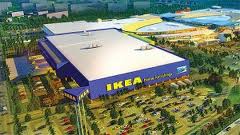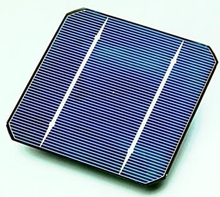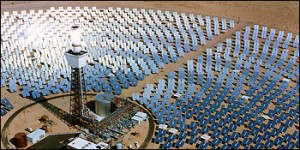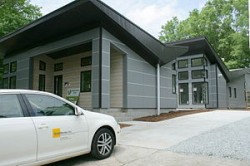Archive for May, 2011
NYC Rooftops Are Going Green

A recent trend in NYC has developers and homeowner’s alike turning wasted rooftop spaces into living green roofs. The roofs are a system of waterproof membranes partially or completely covered with plants, tree’s or grasses. One of the most popular rooftop plants is sedum, known for its absorbent leaves and hardy nature.
Green roofs lower energy costs by providing insulation, absorb rainwater run off and help reduce pollution. Green roofs can absorb up to 70% of rainwater, making it appealing to New Yorkers since the excessive rainwater run off has been burdening their drainage systems which then overflows with raw sewage.
The rooftop trend is in part due to tax incentives and grants that have been given since 2008 for installing green roofs. The costs of converting the roofs to green roofs have also fallen. Green roofs can increase the roof life span dramatically while also increasing the real estate value.
Cool Roofs, another green roof technology has been one of the focuses of the mayor of New York City, Michael Bloomberg. The NYC CoolRoofs Project’s website claims 1,355,869 square feet of rooftops have been painted with a white reflective coating in the last year. White roofs cool the roof tops, lower energy costs and reduce carbon emissions and the heat island effect.
Saving money, beautifying the city, and lowering the city’s heat index by converting empty rooftops. New York City is catching up fast to other US cities in the push to go green.
IKEA Goes Forward in Solar

IKEA, the large Swedish furniture company, recently announced its plans to install 4,452 solar panels on the roof of one of their stores in West Chester, Ohio. The 344,000 square foot store is expected to produce 1.3 million kilowatt hours per year.
IKEA plans on adding solar panels to 5 other U.S. locations, including 3 in Maryland and 2 in Pennsylvania. The company is hoping installation will be completed by fall of 2011. IKEA has already installed solar panels at 18 other U.S. locations. The Brooklyn IKEA store has one of the city’s largest rooftop solar arrays.
The 6 new solar arrays will total more than 6 megawatts and utilize more than 22,000 solar panels. While reducing 4,860 tons of carbon dioxide in the air, equivalent to removing 867 cars off the road.
IKEA has implemented a number of other sustainable efforts, including solar hot water systems that are already installed nationwide. Recycling 75% of their paper, wood and plastic waste. And using energy efficient HVAC, lighting systems, skylights in their warehouse and water conserving restrooms. The new solar systems are part of IKEA’s continuing effort to run on 100% renewable power.
Toys R Us to Host World’s 2nd Largest Solar Array
Toys R Us and Constellation Energy are planning to build the world’s second largest rooftop solar array. The plan is to install more than 37,000 photovoltaic solar panels on their distribution center in Flanders, New Jersey.
The solar power system will be built, owned and maintained by Constellation Energy. Toys R Us has agreed to a 20 year power purchase agreement at their 1.5 million square foot distribution facility. The 5.38 megawatt solar panel system is expected to be completed by this summer.
70% of the roof will be covered with Uni-Solar Panels provided by United Solar. Approximately 20 acres of rooftop space will produce 6,362 kilowatts of electricity annually. Enough electricity to power 532 homes a year.
Toys R Us will buy the electricity from Constellation Energy and will save an estimated $366,000 a year in electric costs in Flanders. Toys R Us expects to save $7 million over the next 20 years at this facility.
The panels will provide approximately 72% of the distribution center’s electric needs. The solar energy will also prevent the equivalent of emissions produced by approximately 860 vehicles.
Toys R Us is one of United State’s largest toy retailers with 840 stores in the US and 716 stores in 34 other countries. They plan to install solar panels at their other Toys R Us locations soon.
This is expected to be North America’s largest rooftop solar power installation. Currently GM has largest solar roof installation in Spain.
Rooftop Solar vs Large Solar Power Plants
Roof top solar panels may be better for the environment than the large solar projects rushing to take over large chunks of public land in the Southwestern United States.
Billions of dollars in tax incentives, cash grants and loan guarantees have brought hundreds of large solar companies to the open deserts to cash in on the sun’s rays.
Some advocates are claiming that the governments push for renewable energy may be overshadowing the deserts ecological balance.
The majority of the solar plants will be built on public undeveloped land, turning these sites into permanent industrial zones. Solar Done Right, a coalition of public land activists, believes the government could take advantage of already disturbed lands. The EPA has identified hundreds of thousands of acres of such sites.
The massive solar power plants will do irreversible damage to our deserts. Threatening rare species of animals and plants, using precious groundwater, and creating traffic to and from these locations. These lands are also home to historic, prehistoric and culturally important sites.
Advocates believe the vast urban landscape is a better alternative for large solar projects than bulldozing our deserts.
The government owns many buildings with large flat roofs that are suitable for large scale solar projects. Already across the United States, post offices, state capitals, universities, large retail chains, homeowners and many more are putting up roof top solar panels.
In our rush to go green, we need to slow down and look at all the possibilities and alternatives to make sure we aren’t sacrificing one resource to save another.
New FHA, Fannie Mae Loans for Energy Efficient Upgrades
Federal Housing Administration’s new loan program “Power Saver” allows eligible home owners to borrow money to finance windows, doors, heating, ventilation, solar panels and other high energy efficient retrofits.
Eligible homeowners can borrow up to $25,000 at a 5-7% fixed interest rate with 20 years to pay it back. Some of the qualifications are that the house must be a single family home and be your principle residence. Also your FICO score must be at least 660 and your house must not have negative equity.
Although not mandatory, energy audits are an important element in the program. Most lenders are encouraging owners to sign up for an energy efficient analysis conducted by a certified specialist. The specialist will recommend in detail the types of upgrades or additions that will help cut your energy bills and reduce greenhouse emissions.
Fannie Mae’s “Energy Improvement” mortgage add on program, includes the cost of improvements into the mortgage itself. Nationwide participating lenders allow you to purchase an existing home and make energy efficient improvements.
Fannie Mae requires an audit by a certified Home Energy Rating System expert upfront to justify any changes to your single family house as legitimately cost efficient.
At www.pueblo.gsa.gov you can see a list of other FHA, Fannie Mae, Freddie Mac, U.S. and conventional mortgage loans available to make energy efficient upgrades such as roof top solar panels to your home.









